Mary Andross
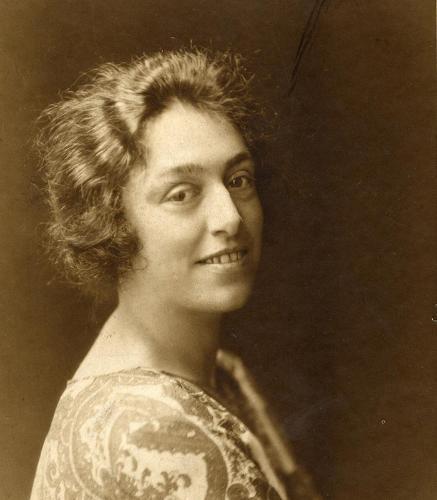
1893 - 1968
Image source: University of Glasgow
Who am I?
Mary Andross was born in Irvine in 1893. She graduated with a BSc from the University of Glasgow in 1916 and thereafter undertook postgraduate work in and around Glasgow (including a spell at the Ministry of Munitions Inspections Department, working on poison gasses). In 1924 she was appointed to a lectureship at the Glasgow and West of Scotland College of Domestic Science (now Glasgow Caledonian University), and was head of the Science Department from 1940 until her retirement in 1965. She was an inspiring and able teacher - popular with her students, she was also much sought after as a public speaker, particularly at the Women’s Rural Institute and Women’s Guild meetings.
I am monumental because...
Mary was one of the pioneers of the profession of dietetics. During her 41 years at the College she made many original contributions to our knowledge of the chemical composition of food. Her most notable contributions were to the study of changes in food proteins, especially in the cooking of meat and of eggs. She made important contributions to the war effort during World War II - carrying out research into new sources of Vitamin C, helping the College organise and run a canteen for servicemen at St Enoch Station, and helping run a free preserving and canning service at the College to help families cut food waste. She was a Fellow of the Royal Institute of Chemistry, a Fellow of the Institute of Food Science and Technology and a member of the Nutrition Society and the Society of Chemical Industry.
Why is my work important today?
Mary was one of the pioneers of the profession of dietetics, still an important professional field today helping to improve public health.
With thanks to:
Kirsty Menzies and Carole McCallum, Archives and Special Collections, Glasgow Caledonian University.
University of Glasgow.


![In 1938 Andross [bottom right] and the staff and students of the Glasgow and the West of Scotland College of Domestic Science set up a nutrition centre at Glasgow’s Empire Exhibition. Courtesy of Archives and Special Collections, Glasgow Caledonian University.](/media/Media_574188_smxx.jpg)
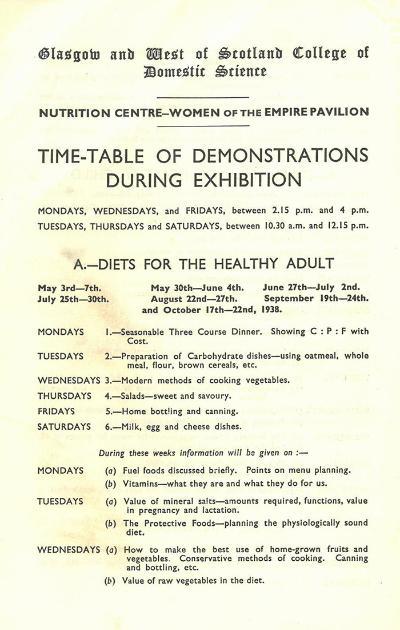 Crowds flocked to the College’s demonstrations - and they were so popular that the recipe cards for specimen dishes were snapped up by an eager public. Courtesy of Archives and Special Collections, Glasgow Caledonian University.
Crowds flocked to the College’s demonstrations - and they were so popular that the recipe cards for specimen dishes were snapped up by an eager public. Courtesy of Archives and Special Collections, Glasgow Caledonian University. 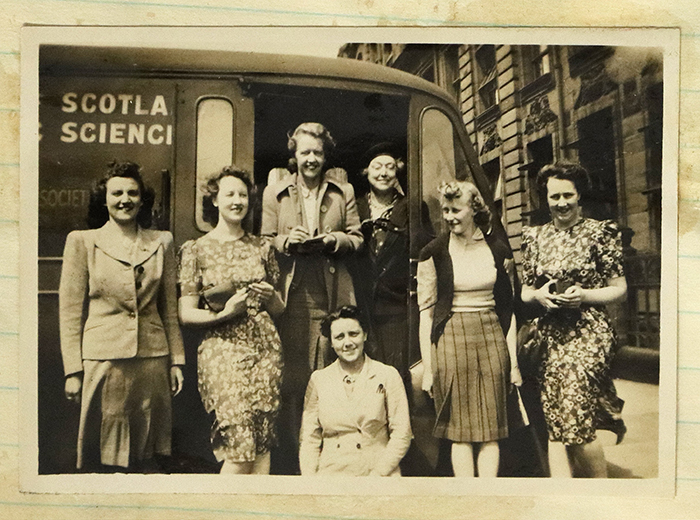
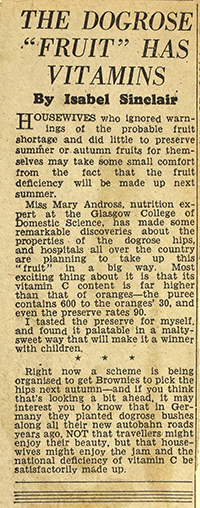 Newspaper cutting, October 1940. During the Second World War Andross undertook research to find new sources of Vitamin C following fruit shortages. She found that wild rose hip has a very high Vitamin C content and devised recipes to encourage members of the public to make use of them and preserve them. Courtesy of Archives and Special Collections, Glasgow Caledonian University.
Newspaper cutting, October 1940. During the Second World War Andross undertook research to find new sources of Vitamin C following fruit shortages. She found that wild rose hip has a very high Vitamin C content and devised recipes to encourage members of the public to make use of them and preserve them. Courtesy of Archives and Special Collections, Glasgow Caledonian University.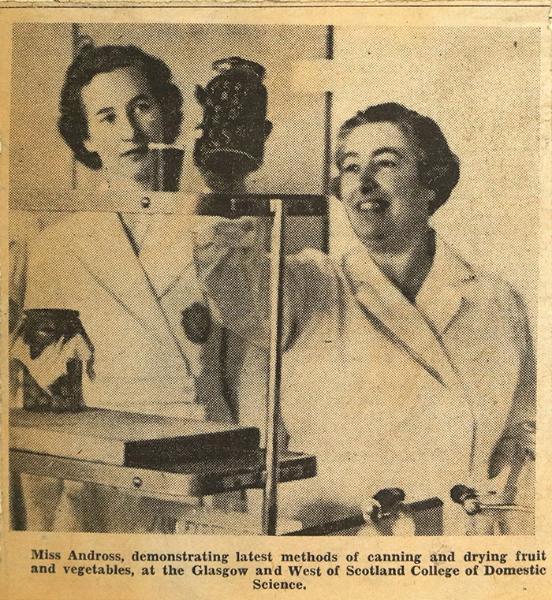
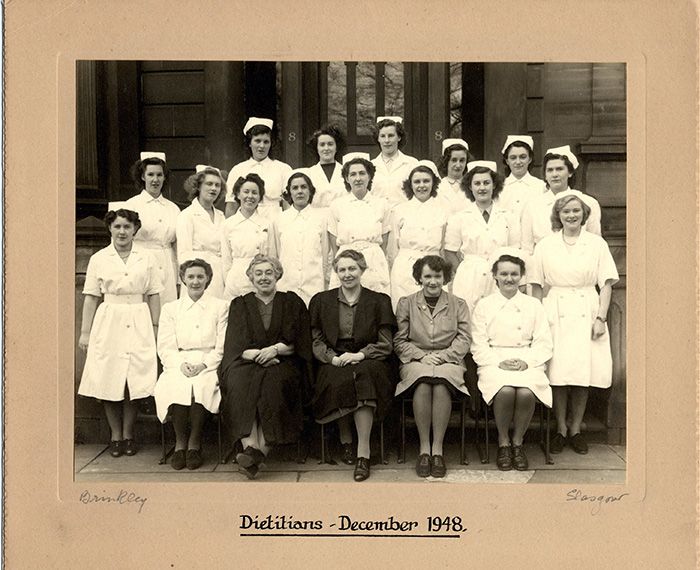
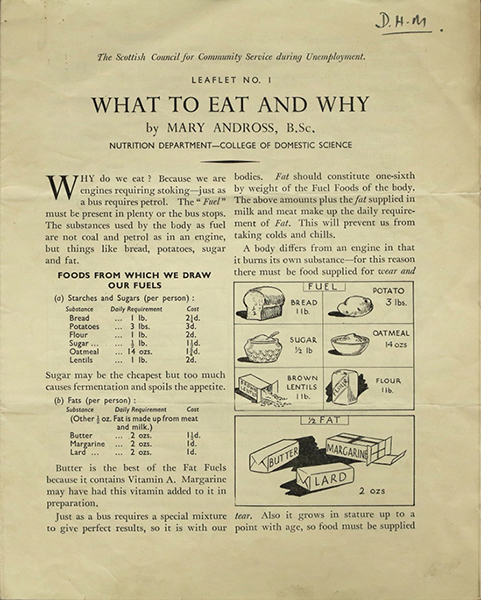 Leaflet (No. 1) by Andross for the Scottish Council for Community Service during Unemployment, 1937. Courtesy of Archives and Special Collections, Glasgow Caledonian University.
Leaflet (No. 1) by Andross for the Scottish Council for Community Service during Unemployment, 1937. Courtesy of Archives and Special Collections, Glasgow Caledonian University.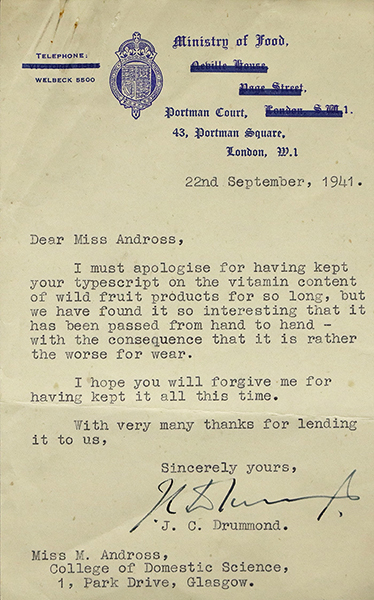 Letter from Ministry of Food praising Andross’ paper ‘Vitamin Content of Wild Fruit Products’ (held in GCU Archive Centre). Courtesy of Archives and Special Collections, Glasgow Caledonian University.
Letter from Ministry of Food praising Andross’ paper ‘Vitamin Content of Wild Fruit Products’ (held in GCU Archive Centre). Courtesy of Archives and Special Collections, Glasgow Caledonian University.